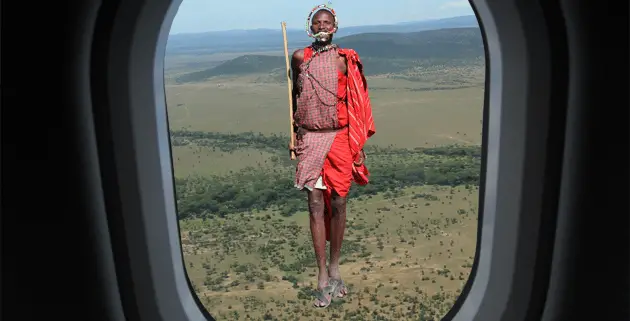February Cover Story
Africa’s potential for regional and domestic travel is set to boom as foreign investment floods the continent and internet accessibility expands.
Foreign direct investment continent-wide is expected to reach $56 billion by 2015, from $38 billion in 2012. The World Bank lists the resource-rich countries of Mozambique, Ghana, and Rwanda among the fastest growing economies of 2013. Many other countries in sub-Saharan Africa are not far behind. Overall economic growth for the region in 2013 is 5.6% with a third of countries achieving 6% growth or more.
But African countries are faced with both potential and challenges. According to the International Air Transport Association (IATA), Africa’s current scenario compares with that of 1980 China.
In the late 1970s, it was hard to see how China would transform into the economic powerhouse it is today, contributing over 15% of global GDP.
Connectivity with the world was limited, airline safety was an issue, infrastructure was poor, and airline fleets were in desperate need of renewal. Economic reforms unleashed entrepreneurial innovation. And aviation was a strategic enabler of growth—supported by infrastructure development and global standards, particularly for safety.
Africa’s population today is similar to the China of 1980 and contributes only slightly more to global GDP (Africa contributes 3% of global GDP today, China contributed 2% to global GDP in 1980). And like 1980 China, there are changes taking place. For Africa, these center on demilitarization, political reform, and economic liberalization.
But while the opportunity for development is there, Africa will need to resolve many of the same issues that China handled so successfully.
Bringing 54 countries together will be extremely challenging given the divergent strategies of many of these countries. Nevertheless, the rewards on offer make the effort worthwhile. And it is clear that aviation connectivity will play a role.
South African Tourism already considers the regional African tourist as an important inbound market, contributing more than 73% of total tourist arrivals and more than R50-billion in revenue in 2011.
From an economic perspective, Nigeria’s gross domestic product (GDP) was $292 billion last year, compared with $354 billion for South Africa, according to International Monetary Fund figures.
But Nigeria’s statistics office is about to change the way various sectors of the economy are weighted when it comes to determining the estimated GDP. Currently, Nigeria’s GDP figure is based on a weighting from 1990. In other words: It is hugely underestimated. Sectors such as IT and telecoms have grown significantly in recent years, and this hasn’t been taken into account.
Analysts say that Nigeria’s GDP figure could jump by anywhere between 20 and 65 percent when the new calculations are released.
That means Nigeria may see its GDP increase to between $384 billion and $424 billion this year.
Such a leap isn’t unprecedented. Neighbouring Ghana’s GDP estimate increased by about 60 percent in 2010 after its figures were rebased. Many other sub-Saharan African countries also think their GDP is underestimated, according to Simon Fraser University professor Morten Jerven, an expert on African development statistics.
And so, with investors pouring billions of dollars into Africa as traditional 1st world markets shrink, just how big is Africa’s potential for internet and smartphone growth (and hence for online travel bookings)? To get the answers, we turned to McKinsey & Company − one of the worlds’ top market research companies − who estimate that today, more than 720 million Africans have mobile phones, some 167 million already use the Internet, and 52 million are on Facebook. By 2025, these figures are predicted to grow 360 million smartphones, 600 million internet users, and $75 billion in annual e-commerce sales (read more on pages 12 to 14 of the Tourism Tattler February magazine).
With the internet being touted as an increasingly essential marketing tool, we also asked McKinsey to share their research on travel distribution with specific emphasis on vertical and lateral distribution partnerships, and authors Robert Carey and David Kang report their view on ‘The trouble with travel distribution’ which ends with an insightful infographic titled ‘Understanding travel’s core customers’ (see pages 15 to 17).
In this edition, we also look at how hotels are boosting their room sales across Africa (page 10), we have advice on the taxing problem of VAT invoices (page 08), the ongoing controversy surrounding rhino conservation (page 18), and we unpack Star Grading in South Africa (page 22).
In the March edition, we’ll feature a report on Africa’s Visa requirements − another area of concern that needs to be streamlined for Africa to leverage her potential from both regional and in-bound travel markets.
Yours in Tourism.
Des Langkilde – Tourism Tattler Executive Editor





